Updated Guidance for the Hospitality industry has been released today, 31st March as we head towards the next phase of the roadmap, the re-opening of outdoor hospitality.
We are seeking clarifications on questions that we have and questions that have come in since this guidance was released, if you have any specific questions please get in touch with us by emailing [email protected]
The main changes to the previous guidance are around ventilation, test & trace, testing & vaccinations and the roadmap that underpins this guidance.
This is updated guidance for the hospitality sector in general but we are all focused on Step 2 – not before 12 April for the time being.
Here is an overview of step 2 of the roadmap:
‘Following the move to Step 2, outdoor areas at hospitality venues can reopen to serve customers in groups of up to 6 people or 2 households. These venues may allow customers to use toilets, baby changing rooms or breast-feeding rooms located inside.
Some venues may wish to erect outdoor shelters. To be considered ‘outdoors’, shelters, marquees and other structures can have a roof but need to have at least 50% of the area of their walls open at all times whilst in use.
At any premises serving alcohol, customers will be required to order, be served and eat/drink while seated (even if no alcohol is ordered). If a hospitality venue does not serve alcohol, then customers will be able to order and collect food and drink from a counter, but must consume food and drink while seated at a table.
From Step 2, hospitality venues will also be allowed to provide takeaway alcohol. Takeaway food and drink (including alcohol) must not be consumed on the premises or adjacent to the premises.
This guidance will be kept up to date as we move through the steps of the roadmap, which will be guided by the data.’
The updated guidance for England is outlined below and is the most recent. The guidance for wales, Scotland and Northern Ireland is underpinned with the same principles and we will produce updated guidance for members and field questions on this information in the coming days and or as it is updated.
For wales (updated March 25th 2021) https://gov.wales/guidance-for-tourism-and-hospitality-businesses-coronavirus-html
For Scotland (updated 20th Jan 2021) https://www.gov.scot/publications/coronavirus-covid-19-tourism-and-hospitality-sector-guidance/pages/overview/
For Northern Ireland (updated 18th Dec 2021) https://www.tourismni.com/covid-19/practical-guidance-for-working-safely-during-covid-19/guidance-for-restaurants-pubs-and-bars/
The updated guidance for England is one of a set of documents about how to work safely in different types of workplace.
This guidance is designed to be relevant to any food preparation or service setting where food and drink is sold for consumption at venues or for takeaway or delivery. For example:
- restaurants
- pubs
- bars
- beer gardens
- food to go
- cafes
- self-contained hospitality accessed from outside a closed venue
- social and similar clubs operating as bars and restaurants
- mobile catering and contact catering or similar environments where food and drink is purchased and consumed at a venue in their indoor or outdoor areas or offered for takeaway or delivery
This guidance also considers entertainment in restaurants, pubs and bars and similar venues where food or drink is served, provided they meet current government criteria for safe reopening.
It does not apply to food preparation or food service in clinical or healthcare settings.
What does this mean for me?
We’ve taken out the points from guidance along with signposting to our own resources and guidance that will be most relevant to you, but you must read the guidance in its entirety.
Before you open:
- You must read the guidance and translate it into specific actions for your business
- You must carry out an updated appropriate COVID-19 risk assessment (RA), if you have used our RA template, you can edit this and produce an updated version in line with the guidance. As part of your RA you should include an up to date plan in case of a Covid-19 outbreak amongst your staff or customers on your premises.
- You must share the RA with your staff
- You should communicate what your customers should expect – you should communicate this in the best way for your business and customers. You can use the Staying Covid-19 secure notice and the resources NCASS has provided such as the customer notice which can be found here.
- Complete the FSA & NCASS reopening checklist which can be found here
- Deep Clean your premises:
- Checking whether you need to service or adjust ventilation systems, for example, so that they do not automatically reduce ventilation levels due to lower than normal occupancy levels.
- Most air conditioning systems do not need adjustment if they draw in a supply of fresh air. HSE guidance on ventilation and air conditioning provides further information.
- Use the NCASS deep cleaning guidance which can be found here
- Additional guidance on reopening food businesses.
- guidance on managing legionella risks.
- Calculate the maximum number of customers that can reasonably follow social distancing guidelines (2m, or 1m+ with risk mitigation where 2m is not viable) at the venue. Taking into account total outdoor space, specific venue characteristics such as furniture as well as likely pinch points and busy areas
- Reconfiguring outdoor seating and tables to maintain social distancing guidelines (2m, or 1m+ with risk mitigation where 2m is not viable) between groups of customers. For example, increasing the distance between tables
When you are open:
Test & Trace:
- Display the official NHS QR code poster. Official NHS QR posters can be generated online.
- Ask every customer or visitor aged 16 and over to check in to your venue or provide their contact details. This can be done quickly and easily using the NHS COVID-19 app to scan in the NHS QR code poster.
- Have a system in place to ensure that you can collect information from your customers and visitors who do not have a smartphone or do not want to use the NHS COVID-19 app. You must keep this data for 21 days and provide it to NHS Test and Trace, if it is requested. Check what data you need to collect and how it should be managed.
- Take reasonable steps to refuse entry to those who refuse to check in or provide contact details.
Businesses operating a service where food and drink is not for consumption on the premises, are not required to comply with these requirements.
Social Distancing:
- Ensure groups are limited to 6 people or 2 households (a support bubble counts as a single household).
- Reduce the need for customers to queue, but where this is unavoidable, using outside spaces for queueing where available and safe. For example, using some car parks and existing outdoor services areas, excluding disabled car parking bays
- If you want to put up an outdoor shelter, to be considered ‘outdoors’, shelters, marquees and other structures can have a roof but need to have at least 50% of the area of their walls open at all times whilst in use.
- Manage the entry of customers, and the number of customers at a venue, so that all customers are seated with appropriate distancing. This is to ensure that the venue, including areas of congestion does not become overcrowded. Managing entry numbers can be done, for example, through reservation systems, social distancing markings, having customers queue at a safe distance for toilets or bringing payment machines to customers, where possible
- Where the social distancing guidelines cannot be followed in full, in relation to a particular activity, businesses should consider whether that activity can be redesigned to maintain a 2m distance or 1m+ with risk mitigations.
Face coverings:
By law, staff and customers of venues that provide food and drink will be required to wear a face covering, unless they have an exemption. By law, all businesses must remind customers and staff to wear a face covering where required (for example, by displaying posters or providing verbal reminders). You are expected to wear a face covering before entering any of these settings and must keep it on until you leave unless there is a reasonable excuse for removing it.
Music & entertainment:
Singing, shouting and aerobic activities generate higher levels of aerosol and increase the risk of transmission further, so these factors should be considered when ensuring you have adequate ventilation in the workplace. Furthermore, lowering background noise (such as music) reduces the need for people to sit close or shout, which can reduce the risk of airborne virus emissions and transmission.
For many restaurants, pubs and bars, providing entertainment such as recorded music, live sports broadcasts, quizzes, live musicians or comedians are an important part of their business.
Steps that will usually be needed:
- Determining the viability of entertainment and maximum audience numbers consistent with social distancing outside and within venues and other safety considerations.
- Preventing entertainment, such as broadcasts, that is likely to encourage audience behaviours increasing transmission risk. For example, loud background music, communal dancing, group singing or chanting.
- Reconfiguring indoor entertainment spaces to ensure customers are seated rather than standing. For example, repurposing dance floors for customer seating.
Service:
- Encourage the use of contactless ordering from tables where available. For example, through an ordering app.
- Adjust service approaches to minimise staff contact with customers. Table service for ordering, service and payment must be used in venues which sell alcohol. Consider further measures such as assigning a single staff member per table.
- Adjust processes to prevent customers from congregating at points of service. For example, having only staff collect and return empty glasses to the bar.
- Minimise contact between kitchen workers and front of house workers. For example, by having zones from which front of house staff can collect food.
- Don’t allow customers to consume food or drink on the premises unless they are seated outdoors.
Keeping your staff safe:
- Ensure both workers and customers who feel unwell stay at home and do not attend the venue. By law businesses may not require a self-isolating worker to come into work.
- Increase the frequency of handwashing and surface cleaning in every workplace.
- Make every reasonable effort to ensure their workers can work safely. This includes consideration of reasonable adjustments for workers or customers with disabilities, including hidden disabilities that are not immediately obvious. Anyone who can work from home should do so. Anyone else who cannot work from home should go to their place of work, if COVID-19 Secure guidelines are followed closely. When in the workplace, everyone should make every reasonable effort to comply with the social distancing guidelines set out by the government (2m, or 1m+ with risk mitigation where 2m is not viable).
- Fresh air helps to dilute the virus in occupied spaces so provide adequate ventilation through doors, windows and vents, by mechanical ventilation using fans and ducts, or a combination of both.
- Where the social distancing guidelines cannot be followed in full, in relation to a particular activity, businesses should consider whether that activity can be redesigned to maintain a 2m distance or 1m+ with risk mitigations.Further mitigating actions include:
– further increasing the frequency of hand washing and surface cleaning
– keeping the activity time involved as short as possible
– using screens or barriers to separate people from each other
– using back-to-back or side-to-side working (rather than face-to-face) whenever possible
– reducing the number of people each person has contact with by using ‘fixed teams or partnering’ (so each person works with only a few others)
- Where the social distancing guidelines cannot be followed in full, even through redesigning a particular activity, businesses should consider whether that activity needs to continue for the business to operate, and, if so, take all the mitigating actions possible to reduce the risk of transmission between their staff.
- Remind customers and staff to wear face coverings where they are required, for example, through use of signage.
- If people must work face-to-face for a sustained period with more than a small group of fixed partners, then you will need to assess whether the activity can safely go ahead. No one is obliged to work in an unsafe work environment. In your assessment you should have particular regard to whether the people doing the work are especially vulnerable to COVID-19.
- If your building has been unoccupied for a period during any lockdowns, consider legionella risk and HSE advice.
- As far as possible, where people are split into teams or shift groups, fixing these teams or shift groups so that where contact is unavoidable, this happens between the same people.
- Considering where congestion caused by people flow and ‘pinch points’ can be improved. Using one-way systems, staggered shifts and assigned staff mealtimes are possible ways to minimise the risk of transmission.
- Taking into account the particular circumstances of those with different protected characteristics, including disability, maternity and religion, and how they may be impacted by shift patterns and measures to reduce people flow.
Ventilation:
- Ventilation should be used as a control measure to reduce the risk of aerosol transmission of COVID-19 in enclosed spaces.
- Ventilation will not reduce the risk of droplet or surface transmission, so other control measures such as cleaning and social distancing are also required.
- There are different ways of providing ventilation, including mechanical ventilation using fans and ducts, natural ventilation which relies on passive flow through openings (doors, windows, vents) or a combination of the two.
- The risk of transmission is greater in spaces that are poorly ventilated. HSE guidance on ventilation and air conditioning explains how to identify those spaces and steps to take to improve ventilation.
Customer toilets:
- Use signs and posters to build awareness of good handwashing technique, the need to increase handwashing frequency and to avoid touching your face, and to cough or sneeze into a tissue which is binned safely, or into your arm if a tissue is not available.
- Consider the use of social distancing marking in areas where queues normally form, and the adoption of a limited entry approach, with 1 in, 1 out (whilst avoiding the creation of additional bottlenecks).
- Consider making hand sanitiser available on entry to toilets where safe, practical and accessible, and ensure suitable handwashing facilities including running water and liquid soap and suitable options for drying (either paper towels or hand dryers) are available. Consider the needs of people with disabilities.
- Set clear use and cleaning guidance for toilets, with increased frequency of cleaning in line with usage. Use normal cleaning products, paying attention to frequently hand touched surfaces, and consider use of disposable cloths or paper roll to clean all hard surfaces.
- Keep the facilities well ventilated, for example by ensuring extractor fans work effectively and opening windows and vents where possible.
- Special care should be taken for cleaning of portable toilets and larger toilet blocks.
- Put up a visible cleaning schedule can keep it up to date and visible.
- Provide more waste facilities and more frequent rubbish collection.
Testing & Vaccinations:
It’s important that you continue to put measures in place to reduce the risk of COVID-19 transmission, including maintaining social distancing, frequent cleaning, good hygiene and adequate ventilation, even if your workers have:
- received a recent negative test result
- had the vaccine (either 1 or 2 doses)
Where you are providing testing on-site, you should ensure that workplace testing is carried out in a safe manner and in an appropriate setting where control measures are in place to manage the risk of COVID-19 transmission during the testing process. These include maintaining social distancing where possible, frequent cleaning, good hygiene and adequate ventilation.
You should also ensure that an appropriate setting is available for individuals to wait in while their test is processed.
Anyone with coronavirus symptoms can get a free NHS test.
You can also order rapid lateral flow tests, to test employees with no coronavirus symptoms. The test kits are entirely free of charge until 30 June 2021 for businesses that register by 12 April.
You can register to order tests if:
- your business is registered in England
- your employees cannot work from home
Register to order coronavirus tests for your employees.
Regular testing, alongside control measures to reduce the risk of COVID-19 transmission, will have a key role to play in future. Regular testing could help identify more positive cases of COVID-19 in the workplace – read further guidance on your options for workplace testing.
Here is a link to the guidance:
The guidance covers the following sections in depth, please take time to read the guidance in its entirety.
What’s changed?
National restrictions – Spring 2021
Priority actions to take – what businesses need to do to protect staff and customers,
Introduction
How to use this guidance
- Thinking about risk
- Keeping your customers and visitors safe
- Who should go to work?
- Social distancing for workers
- Cleaning the workplace
- Personal protective equipment (PPE) and face coverings
- Workforce management
- Inbound and outbound goods
- Tests and vaccinations
Where to obtain further guidance
Download ‘Staying COVID-19 Secure’ notice

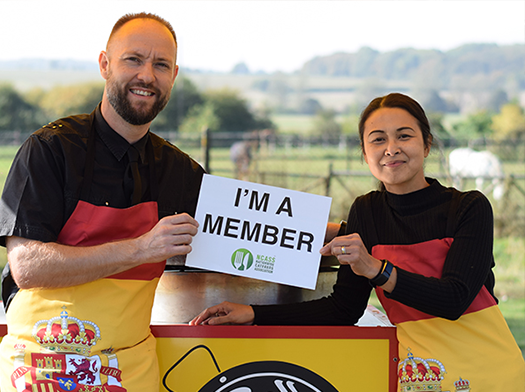
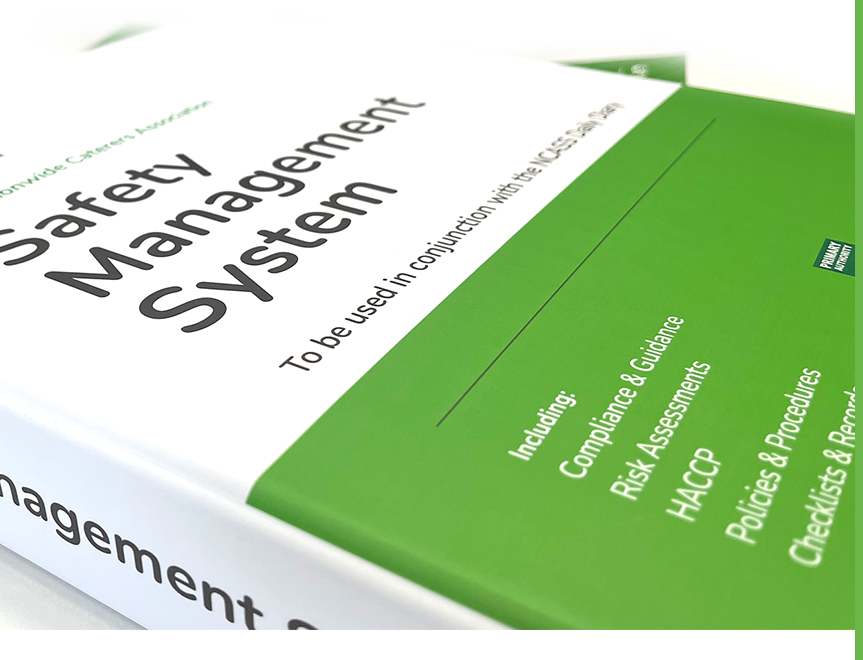
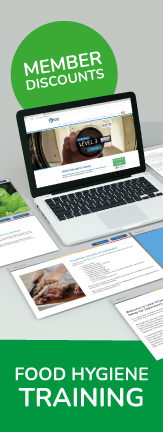
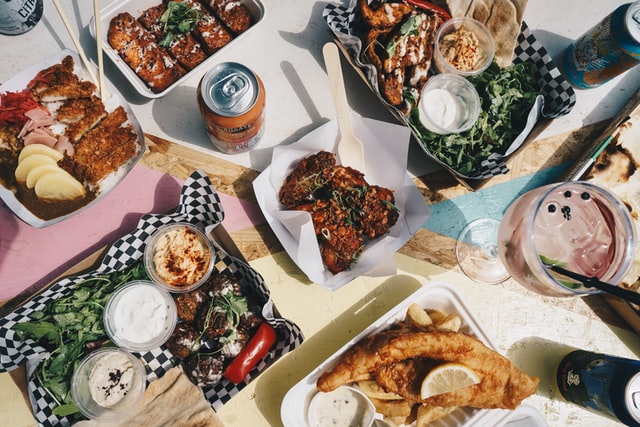
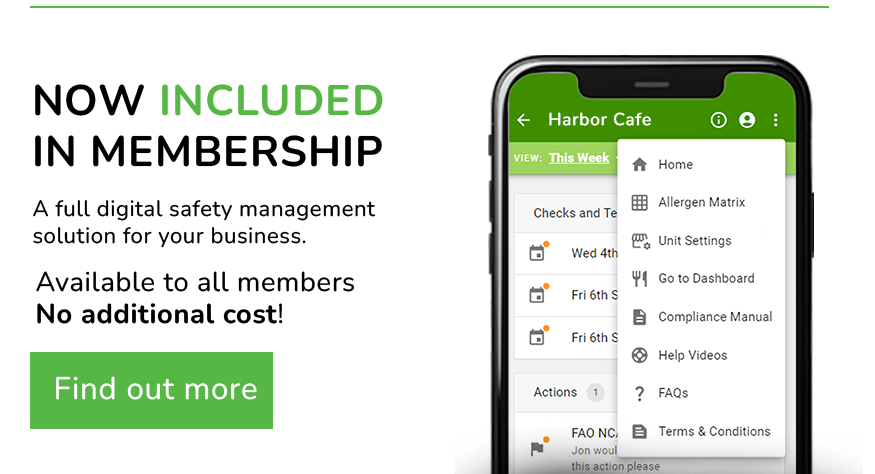
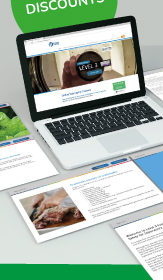 Featured Training
Featured Training
OUR MEMBERSHIP
We're here to help make your catering business a success. Whether that be starting up or getting on top of your compliance and marketing. We're here to help you succeed.
Want our latest content?
Subscribe to our mailing list and get weekly insights, resources and articles for free
Get the emails